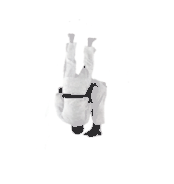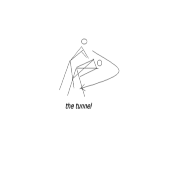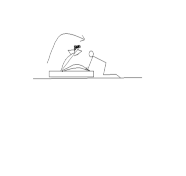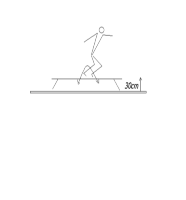
The test is composed of three exercises, each lasting one minute (total three minutes). The aim of the test is to measure force resistance in terms of speed under the condition of obtaining a mixture of aerobic/anaerobic energy. The test subject must try to execute the highest number of repetitions possible of each exercise without rest between one exercise and another. Explanation of the exercises.
At the end of the minute of the third exercise the test is completed. The total number of repetitions of the three exercises is counted. (Not for each individual exercises). AnalysisThe test JMG is an evaluation technique specifically designed for those sports where force resistance at speed is an important element of the sport as is the capacity to carry this out effectively. The test is based on the capacity to produce a mixture of aerobic and anaerobic energy and to correlate of obtaining energy with force resistance at speed while performing the three exercises that make up the test lasting three minutes. (one minute for each exercise). On studying the recuperation curve that follows the test an indicator of the aerobic capacity of the test subject can be seen as well as the other results obtained during the recuperation period. (Three minutes following the end of the test). The following data is necessary to establish the ratio JMG:
The following equations are used when obtaining the ratio JMG:
K is considered to be a constant (220-age). In different studies carried on elite sportsmen there was a tendency for this factor to be the number 200. The results of the ratio JMG give a clear idea of the functional state of the competitor from the point of view of the above mentioned facts. Negative results of the ratio JMG (for example -30) indicate a good aptitude of force resistance at speed while obtaining aerobic – anaerobic energy. On the contrary , positive results (for example +30) give us an indication of poor aptitude. The following results give us an idea of the degree of aptitude:
This test has been used since 1982 and has been included in the testing of performance in many National Federations specially Judo. The results coincide favorably with various laboratory controls and remain true with the specific performance of judokas in competitions of the highest category. It is difficult to find judoist evaluated during a competitive period being winners of important competitions with a test result of below -50. Breaking down the equations necessary to obtain he ratio JMG we can see that in equation A, the values that give us the factor (P1+P2)/2 are going to be related with the intensity of workload evolved by the test subject during the test. This refers to an element relative to the intensity on the test. The element “nº rpt” (number of repetitions) refers to the capacity of the muscles to resist highly intense activity for the three minutes that the tests lasts, under a situation of aerobic/anaerobic energy production. Thus we are given a subjective idea of the level of coordination and agility of the sportsman during the test. The first factor of equation B, [K – (P1-P2)], indicates the results related to the recuperation capacity of the test subject. This information can seen to a greater extent if the cardiac rate recovery curve and the “rlx” of the test subject during the recovery period (three minutes) at the end of the test is studied. The two equations combined show that the test, apart from showing us the aspects already described, give us an indication of the capacity of resistance of the subject, particularly of his/her mixed resistance. Therefore the test is appropriate for non-cyclic action and team sports, based on a resistance of base 3 as a test of resistance it is more specific for being based on non-cyclic exercises rather than on cyclic actions that are found specifically in sports such as running, cycling or rowing. Finally this test is usually accompanied by a valuation of the fatigue level of the subject showing itself at the end of the test on the Borg scale. José Manuel García García |
This HTML document is copyright © 1999 by Neil Ohlenkamp, Encino Judo Club, California, USA. Research provided by José Manuel García García. All rights reserved. Last modified January 1, 1999. |



